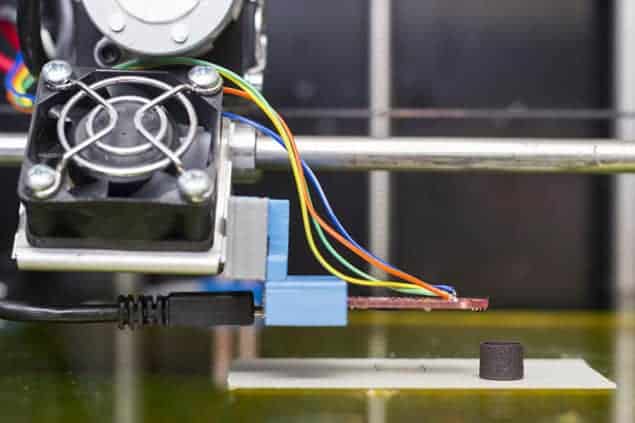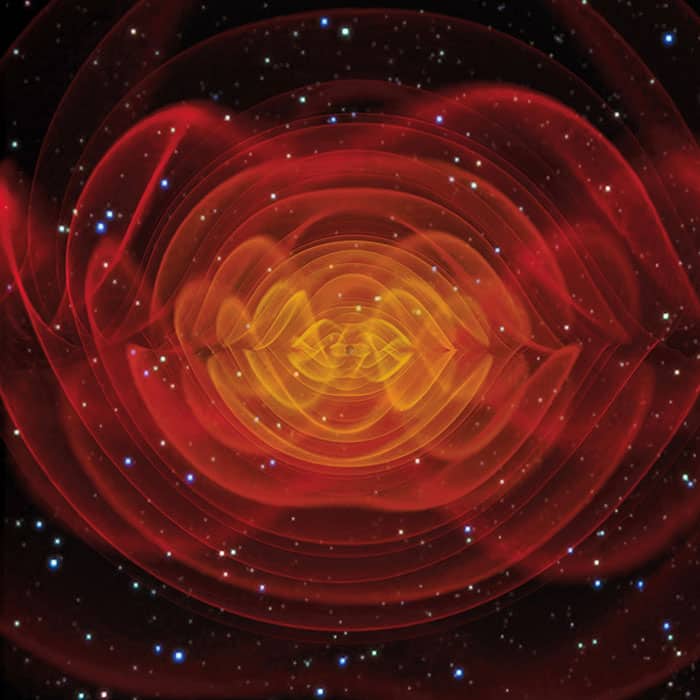Flash Physics is our daily pick of the latest need-to-know developments from the global physics community selected by Physics World‘s team of editors and reporters

Creating designer magnets using a 3D printer
A new method that uses 3D printing to fabricate permanent magnets with specific, pre-determined magnetic-field shapes has been created by researchers at the Technische Universität Wien (TU Wien) in Austria. Their new technique allows for the production of complex forms of magnets, with precisely customised fields – these are especially required to create devices such magnetic sensors. “We often require special magnetic fields, with field lines arranged in a very specific way – such as a magnetic field that is relatively constant in one direction, but which varies in strength in another direction,” explains Dieter Suess, head of the University’s Christian-Doppler Advanced Magnetic Sensing and Materials laboratory. For this to be possible, the magnets need to produced with a specific geometric form – something the TU Wien team do on a computer, adjusting its shape until all requirements for its magnetic field are met. The design is then implemented via a special 3D printer, created by the team, which can handle magnetic materials. The magnet printer uses specially produced filaments of magnetic micro granulate, which is held together by a polymer binding material. The resulting object is made up of roughly 90% magnetic material and 10% plastic. Finally, the object is exposed to a strong external magnetic field, converting it into a permanent magnet. The team says its new process is fast, cost-effective and offers new possibilities including using different materials within a single magnet to create a smooth transition between strong and weak magnetism. The research is published in Applied Physics Letters.
Silicon-germanium glass fibres become a reality
While glass fibres are ubiquitous in most modern technologies – from internet cables to keyhole surgery – scientists are keen to expand the usage of such fibres by adding semiconductor core materials to them. Now, an international team of researchers, led by Ursula Gibson at the Norwegian University of Science and Technology, has created glass fibres with single-crystal silicon-germanium cores. Creating such fibres is a challenge mainly because silicon and germanium have different melting points. The researchers combined both materials in a fibre by scattering germanium flecks through the silicon fibre and then moving the fibre through a laser beam to rapidly heat it, thereby melting the semiconductors in the core in a controlled fashion. “If we take a fibre and melt the core without moving it, we can accumulate small germanium-rich droplets into a melt zone, which is then the last thing to crystalize when we remove the laser slowly,” says Gibson, adding that the team can “make stripes, dots…you could use this to make a series of structures that would allow you to detect and manipulate light.” The work could help in developing high-speed semiconductor devices, as well as in expanding the current capabilities of endoscopes, according to the researchers. The research is published in Nature Communications.
ESA seeks proposals for space-based gravitational-wave observatory

The European Space Agency (ESA) has put out a call for European scientists to submit proposals for the first space mission to observe gravitational waves. A space-borne observatory that will specifically study gravitational waves – ripples in the fabric of spacetime created by accelerating massive objects – was chosen in 2013 as the third large mission (L3) in ESA’s Cosmic Vision plan. The decision was no doubt boosted by the first direct detection of gravitational waves made by the ground-based LIGO detectors in the US in February this year – a second detection was announced in June. In 2014, a “Gravitational Observatory Advisory Team”, composed of independent experts, was appointed. In the team’s final report earlier this year, they recommended that ESA pursues the mission, having verified the feasibility of a multi-satellite design with free-falling test masses linked over millions of kilometres by lasers. The decision also follows the successful performance of ESA’s LISA Pathfinder mission, which demonstrated some of the key technologies needed to detect gravitational waves from space, which was launched in December 2015. “Gravitational waves promise to open a new window for astronomy, revealing powerful phenomena across the universe that are not accessible via observations of cosmic light,” says Alvaro Giménez, ESA’s director of science. Letters of intent for ESA’s new gravitational-wave observatory must be submitted by 15 November, and the deadline for the full proposal is 16 January 2017. The selection is expected to take place in the first half of 2017, with a preliminary internal study phase planned for later in the year.
- You can find all our daily Flash Physics posts in the website’s news section, as well as on Twitter and Facebook using #FlashPhysics. Tune in to physicsworld.com later today to read today’s extensive news story on a new method for generating laser light.



